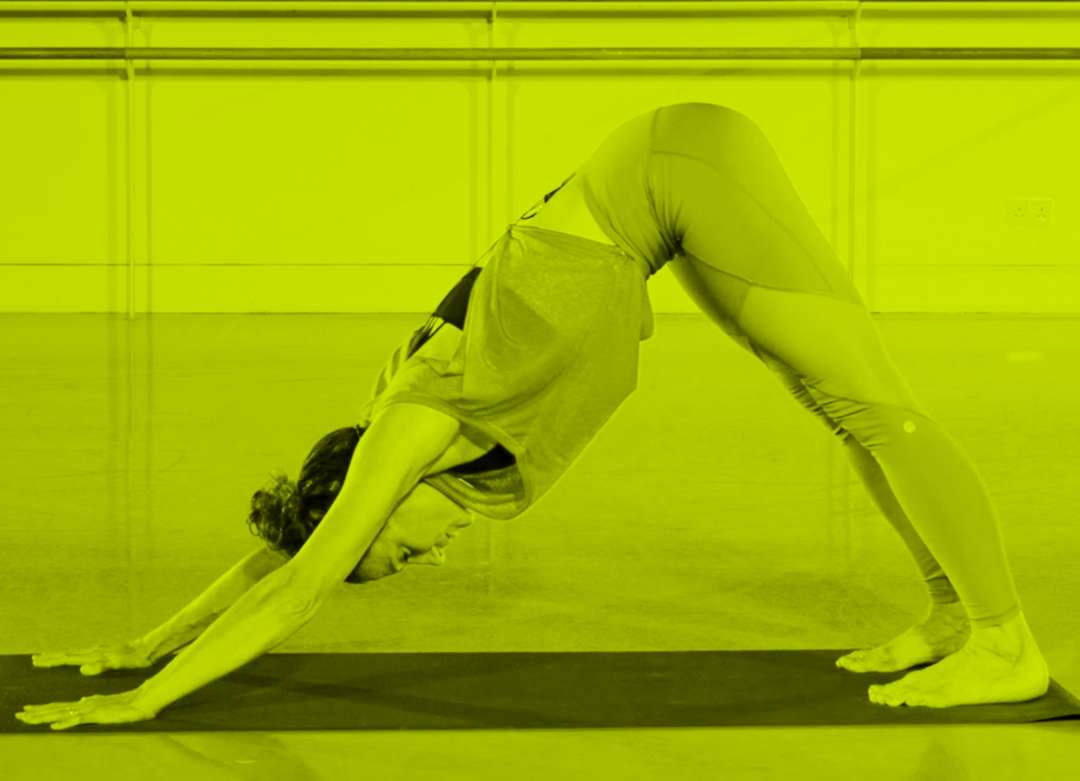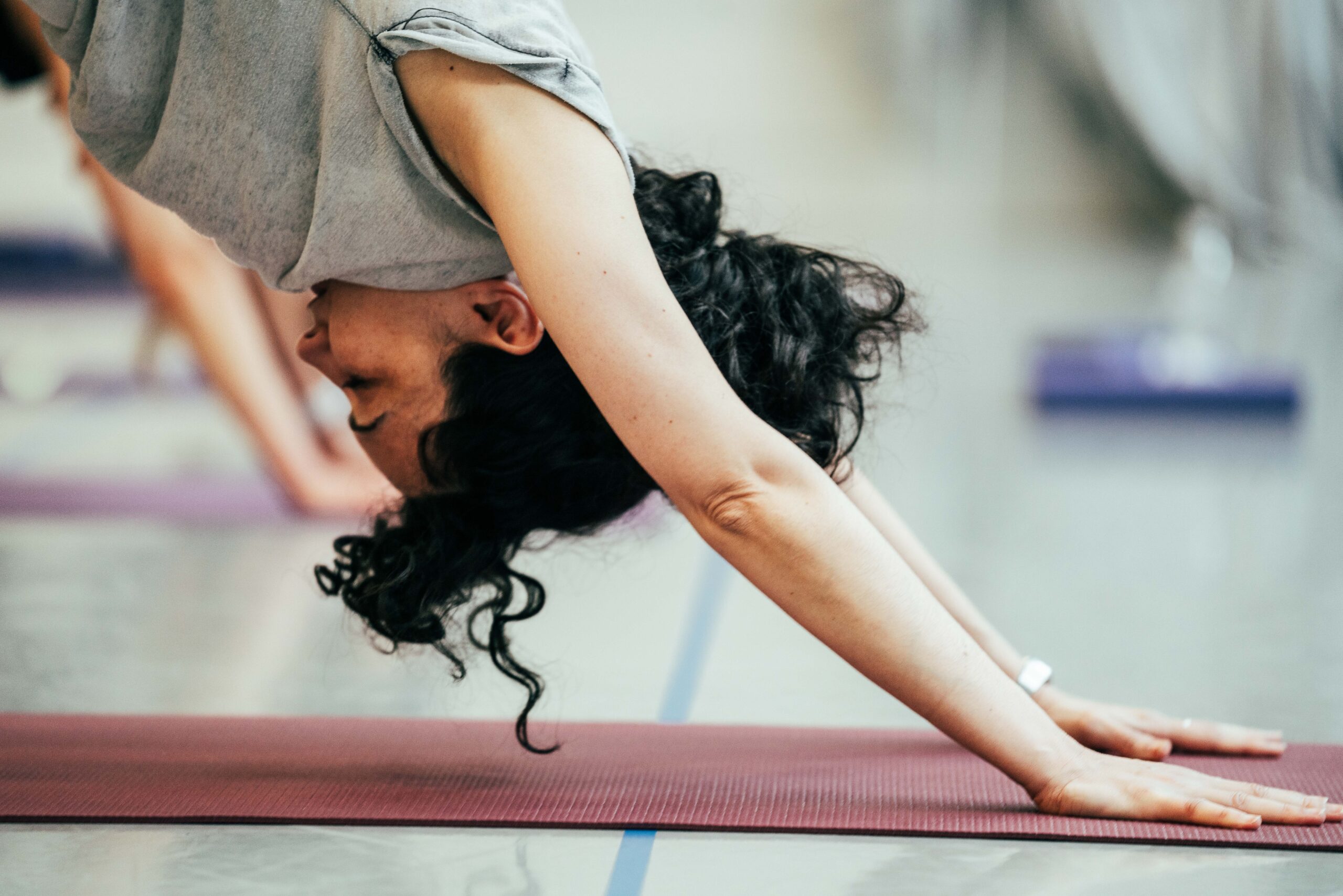How to Start Your Yoga Journey

Are you new to yoga and wondering where to start? We’ve put together some beginner friendly notes to help you get going.
At Home or in a Studio?
One of the great things about yoga is that you can practise it anywhere:
At Home: If you’re completely new to yoga, stepping into a studio for the first time can be intimidating. There’s so many styles out there, and it can be daunting walking into a space full of seemingly seasoned yogis. One of the key benefits of a yoga practice is to walk off feeling more grounded, more at ease in your body, and more confident too, so worrying whether you’re “doing it right” or caring what others around you might think (note, they’re probably not looking, and focusing on themselves instead) will zap some of that focus away. Starting out at home, in your own space and in your own time is ideal to get over those initial nerves. So roll out your mat, log in (hello, Rambert Plus!), and take things at your own pace.
In a Class: In-person classes can be helpful, especially if you like feeling part of a community. In an in-person class, you can also get some feedback and some hands on adjustments which will help with understanding poses and support good alignment. Starting with a few beginner-friendly classes in a studio might give you the tools and the confidence to practise on your own online, eventually reaping the benefits whether you’re home or travelling.

Top Tips to Get Moving
Practise Breathing: Yoga is as much about breath as it is about movement, if not more. Take time to focus on your breath in each pose—it helps calm the mind and guide your movement. The most common breathing pattern for a flowing yoga sequence is to do 1 breath for each movement.
Be consistent: Even 15-20 minutes of yoga a day can make a big difference. The key is to practise regularly to let your body gradually open up and strengthen over time. Making room in your schedule for regular sessions will also help you develop your mindset and focus.
Listen to Your Body: Yoga is not about pushing yourself into extreme positions. It’s about using your breath mindfully and moving the body healthily. If something doesn’t feel right, ease off more complex variations and return to foundational poses: give yourself time to progress. Most yoga teachers will offer modifications and variations in classes, so that everyone can tailor the class to the sequence that best serves them.
Start simple, with foundational poses: If you want to practise by yourself alongside classes, identify a sequence of simple asanas (or poses), and practise them regularly. There’s no need to rush or master advanced poses right away.
Use Props: Don’t be afraid to use props like blocks or blankets to make poses more accessible. Every body is different and props help you achieve good alignment without straining, which is important for injury prevention.
Take Breaks: If you feel tired, drop into child’s pose, or sit back on your heels, and take a moment. Yoga isn’t about pushing yourself—it’s about moving mindfully and respecting your limits.
Different Types of Yoga
There are many types of yoga, but as a beginner, it’s best to start with a style that suits where you are right now. Here are some common options:
Hatha Yoga: A gentle introduction to the basics. Hatha focuses on alignment and breathing, making it perfect for beginners.
Vinyasa Yoga: If you enjoy flowing from one movement to the next, Vinyasa is for you. It’s more dynamic, thanks to the rhythm you’ll build up in the flowing sequence. Vinyasa is a great way to get energy moving through the body.
Restorative Yoga: Restorative yoga is a good option if you are in need of a break. In a Restorative yoga class, you’ll stay in comfortable poses for some time, using supportive props so that you can relax into each pose, creating space to relax the spine and the joints of the body, and to calm the mind—it’s ideal if you’re run down, tense, stressed, jet lagged, or simply needing a break.
Yin Yoga: Similar to Restorative, but with a focus on deep body stretches, facilitated by long holds in poses. Yin targets the connective tissues and is fantastic for increasing flexibility.
Here at Rambert, we don’t feel one style is more suited to beginners than others. They are all accessible to beginners, as long as the teacher offers support and some variations.

Start at Home with Rambert Plus
If you’re ready to dive in, Rambert Plus has everything you need to start practising yoga from home. There’s some beginner-friendly yoga classes led by our brilliant faculty who will guide you through the basics, with clear instructions to help you practise safely.
Start small, stay consistent, and most importantly—enjoy the process. Yoga is a journey, and whether you’re using it to support your dance practice or as exercise on its own, the practice will reward you over time.